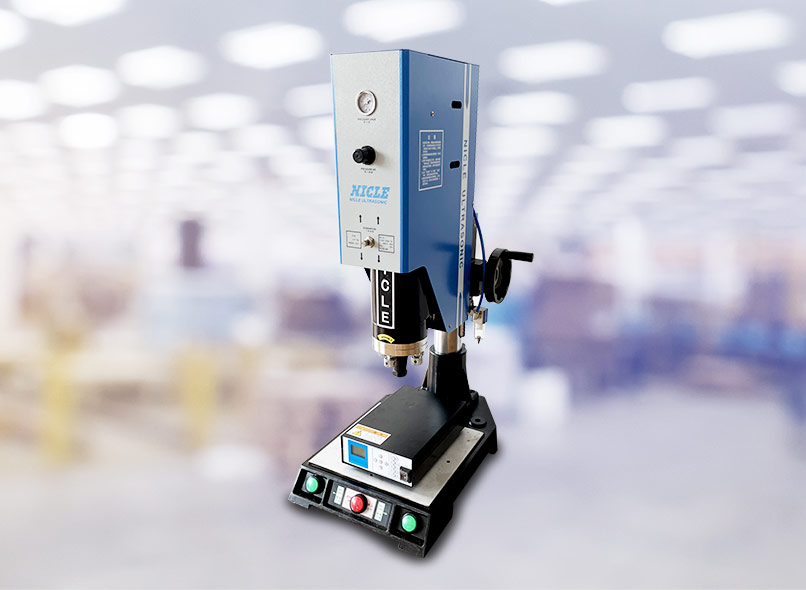Ultrasonic Welding of Nickel Foam and Solid Sheets

Ultrasonic welding is a cutting-edge technology that has revolutionized the field of metal joining. It offers numerous advantages, including low heat input, high efficiency, and the ability to produce solid-state joints. This technique has found applications in various industries, from electronics to aerospace, due to its unique properties and capabilities.
In this comprehensive article, we will delve into the world of ultrasonic welding, exploring its principles, applications, and the latest advancements in the field. We will also discuss the welding of specific materials, such as nickel foam and solid sheets, and its relevance in the production of nickel metal hydride batteries. By the end of this article, you will gain a deep understanding of ultrasonic welding and its significance in modern manufacturing processes.
1. Understanding Ultrasonic Welding
Ultrasonic welding is a solid-state joining process that utilizes mechanical vibrations to bond materials. Unlike traditional fusion welding methods, ultrasonic welding operates at a lower temperature, preventing the melting of the base materials. Instead, the vibrations generate friction between the surfaces to be joined, resulting in localized heating and plastic deformation. This leads to the formation of a strong bond between the materials.
The process involves the use of an oscillatory system that generates mechanical vibrations at ultrasonic frequencies, typically ranging from 19 to 25 kHz. These vibrations are parallel to the interface, causing friction, destruction of oxide layers, and deformation of the materials. Diffusion also plays a role in the joining process, further enhancing the bond strength.
Ultrasonic welding has gained popularity in various industries, including electrical, automotive, medical, and aerospace. It offers advantages such as low heat input, high efficiency, and the ability to join metals with low hardness and yield strength. However, there is still ongoing research to improve the process control, understand the welding mechanisms, and develop new joint types.
2. Applications of Ultrasonic Welding
The versatility of ultrasonic welding has made it a sought-after technology in numerous applications. One of its key advantages is the ability to join metallic foils, thin sheets, and wires. This makes it ideal for the production of electronic components, where small-scale and precise connections are required.
In the automotive industry, ultrasonic welding is used for various applications, including the assembly of interior components, such as door panels and dashboard elements. It is also employed in the manufacturing of medical devices, where the need for sterile and reliable connections is crucial.
Another emerging application of ultrasonic welding is in additive manufacturing. Ultrasonic consolidation, also known as ultrasonic additive manufacturing, allows for the production of composite materials by embedding different reinforcements or functional materials between metallic layers. This opens up new possibilities for material design and customization.
3. Ultrasonic Welding of Nickel Foam and Solid Sheets
Nickel foam has gained significant attention in the battery-manufacturing industry due to its low density, large specific surface area, and superior conductivity. Ultrasonic welding offers a reliable method for joining nickel foam with solid sheets, such as 1A99 Al. This process enables the production of nickel metal hydride batteries with improved material stability, weight reduction, and extended battery life.
The welding of nickel foam and solid sheets requires careful consideration of the welding parameters, such as clamping force and welding energy. Through experimental studies, optimal values for these parameters can be determined, resulting in high-strength joints. The microstructure of the weld joints is also a critical factor in the overall performance of the welded materials.
4. Microstructure Evolution during Ultrasonic Welding
During the ultrasonic welding process, the microstructure of the materials undergoes significant changes. In the case of coarse-grained nickel, a thin layer with an ultrafine-grained (UFG) microstructure is formed near the weld surfaces. The bulk of the sheets retain the coarse-grained microstructure, but with increased dislocation activity. On the other hand, when welding samples with an UFG initial microstructure, significant grain growth occurs, with fine grains observed only along the welding interface.
The microstructural evolution during ultrasonic welding is influenced by various factors, including the initial structure of the materials and the welding process parameters. Understanding these mechanisms is crucial for optimizing the welding process and achieving high-strength weld joints. The use of UFG sheets has shown promising results, with higher strength weld joints compared to those obtained with coarse-grained sheets.
5. Welding Parameters and Mechanical Properties
The clamping force and welding energy are two key parameters that significantly affect the mechanical properties of ultrasonically welded joints. Through experimental studies, optimal values for these parameters can be determined, resulting in joints with high lap shear strength. Lap shear tests are commonly performed to evaluate the strength of the weld joints, with higher values indicating better weld quality.
In the case of ultrasonic welding of nickel foam and solid sheets, the lap shear strength of the joints is significantly influenced by the initial microstructure of the materials. Joints made from UFG samples exhibit higher lap shear strength compared to those made from coarse-grained samples. This highlights the importance of the initial material structure in achieving strong and reliable weld joints.
6. Surface Temperature during Ultrasonic Welding
Monitoring the surface temperature during ultrasonic welding is crucial for ensuring the quality and integrity of the weld joints. Infrared temperature measurements provide real-time data on the temperature distribution at the weld interface. The temperature at the edge of the weld interface increases with the welding energy, reaching a peak value during the welding process. This rapid heating and cooling process is characteristic of ultrasonic welding, which operates at high speeds and efficiency.
Controlling the surface temperature is essential to prevent undesirable effects, such as excessive heating, melting, or damage to the materials. Optimization of the welding parameters, such as the welding energy and duration, can help achieve the desired temperature distribution and ensure the integrity of the weld joints.
7. Surface Morphology and Fracture Analysis
The surface morphology and fracture analysis of ultrasonically welded joints provide valuable insights into the bonding mechanisms and the quality of the welds. In the case of open-cell Cu foam and Al solid sheet joints, the three-dimensional surface morphology reveals the avoidance of large-scale collapse of the Cu foam structure. Fractures occur at the edge of the weld spot on the Cu foam side, indicating a transverse-through-partial-thickness mode of failure.
The interface and fracture morphology of the joints can be analyzed using scanning electron microscopy, providing detailed information on the microstructural characteristics and the bonding interface. This analysis helps in understanding the connection mechanism and the factors influencing the joint strength and integrity.
8. Corrosion Resistance of Ultrasonically Welded Joints
The corrosion resistance of ultrasonically welded joints is a crucial aspect, especially in applications where the joints are exposed to harsh environments. Various factors, such as the microstructure, welding parameters, and the compatibility of the base materials, can influence the corrosion resistance of the weld joints.
By conducting corrosion tests, the long-term performance and durability of the weld joints can be evaluated. This information is essential for ensuring the reliability and functionality of the joints in real-world applications. Surface treatment techniques, such as coatings or protective layers, can also be employed to enhance the corrosion resistance of the weld joints.
9. Advancements in Ultrasonic Welding Techniques
Advancements in ultrasonic welding techniques continue to drive the development of new applications and improve the performance of weld joints. Researchers are exploring innovative approaches, such as laser-assisted ultrasonic welding and hybrid welding techniques, to overcome the limitations of traditional ultrasonic welding methods.
Laser-assisted ultrasonic welding combines the benefits of laser welding and ultrasonic welding, offering enhanced control, precision, and joint quality. Hybrid welding techniques, on the other hand, combine ultrasonic welding with other joining methods, such as friction stir welding or resistance spot welding, to achieve improved joint strength and reliability.
10. Future Directions and Challenges
The field of ultrasonic welding holds significant potential for further advancements and applications. Ongoing research focuses on the development of more powerful welding systems, improvement of process control, deeper understanding of the welding mechanisms, and the exploration of new joint types.
Challenges in ultrasonic welding include the welding of dissimilar materials, the welding of complex geometries, and the optimization of welding parameters for specific applications. Overcoming these challenges will pave the way for the widespread adoption of ultrasonic welding in various industries and enable the production of innovative and high-performance products.
11. Conclusion
Ultrasonic welding has emerged as a leading technology for solid-state joining, offering numerous advantages over traditional fusion welding methods. The ability to achieve high-strength joints, low heat input, and precise control makes it an attractive option for various industries, including electronics, automotive, medical, and aerospace.
The welding of nickel foam and solid sheets, particularly in the production of nickel metal hydride batteries, highlights the significance of ultrasonic welding in advanced manufacturing processes. By understanding the microstructural evolution, optimizing welding parameters, and analyzing the mechanical properties and fracture behavior, researchers can achieve reliable and high-performance weld joints.
As the field of ultrasonic welding continues to evolve, advancements in welding techniques, materials, and process control will further enhance its capabilities and expand its applications. With ongoing research and development, ultrasonic welding is poised to revolutionize the manufacturing industry and drive innovation in various sectors.
See more ultrasonic welding troubleshooting





